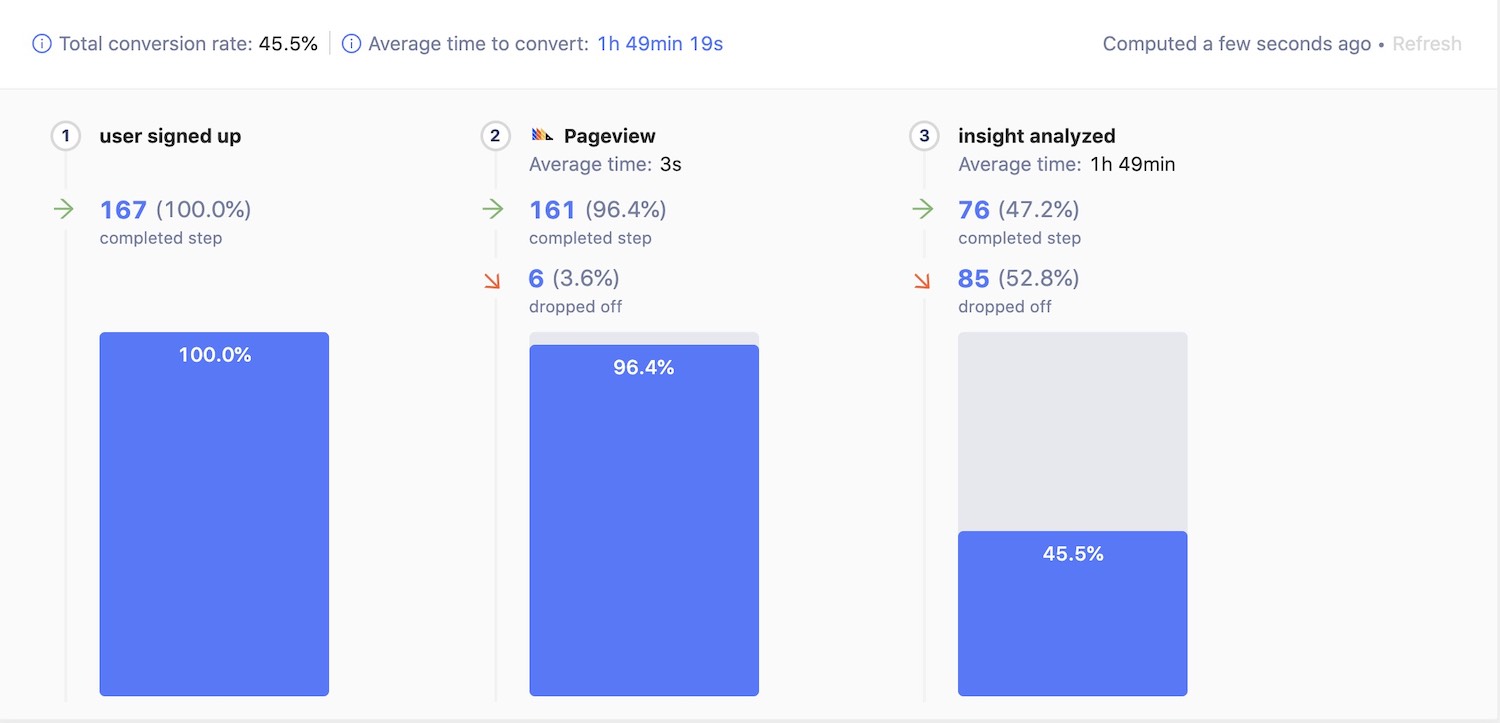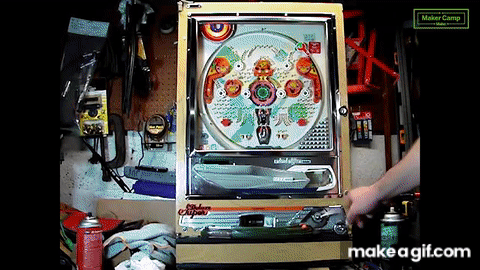Funnels: The One Big Mental Model from Sales & Marketing
The traditional funnel is a measurement device for, say, number of people converting in your product.
But funnels are a lot more universal, and you can use them to answer tough questions in Physics and Chemistry, not just for human behaviour. This post shows you how to use funnels more often, what are the general principles behind funnels, and finally, why this flexibility makes funnels the one big mental model from sales and marketing.
We’ll start with 4 weird examples of funnels in the wild.
Then, we’ll use the examples to decipher the general principles. We investigate what are the similarities and differences between the examples to come up with a general model for Funnels.
Overall, we’ll answer what exactly are funnels, why they’re cool, and where to apply them. Let’s dig in.
Crude Oil Distillation
To dissolve all connotations with existing usage of funnels, let’s start with something more arcane. Let’s go to Chemistry & fractional distillation.
Why do you think crude oil is called black gold? It’s not just because it produces petrol. It’s because it produces several kinds of fuels: gasoline, diesel fuel, heating oil, jet fuel, petrochemical feedstocks, waxes, lubricating oils, and asphalt. Crude oil starts with a mixture of these, and goes through several rounds of processing which spits these fuels out one by one.
At every round of processing, depending on the temperature, you get one product out of crude oil. So, for example, if you first set the temperature at 100 degrees, you get petrol/gasoline out of crude oil. Then, at 150 degrees, you get kerosene out of crude oil. And now the mixture has diesel oil, lubricating oil, and jet fuel left inside. You keep going through these steps, until you only have jet fuel left.
This is a funnel1. You have a lot of “things” which are processed over different steps, such that you lose some, until you’re left with one thing.
Three more examples, and then we’re ready to draw the pattern out from it.
ETL Pipeline
Let’s jump to software engineering.
Say you have an excel sheet of survey results. You asked people for their names, work place, salary, and favourite color. Now, it’s time to process this data: First, you want to remove all excel rows that have a column empty. You dislike people who don’t fill in the full survey, and don’t care about their data. Then, since your favourite colour is blue, you’re only interested in people whose favourite colour is blue.
Finally, you have a set of people who filled the survey completely and like the colour blue, so you insert them into a new excel sheet.
This process is an Extract-Transform-Load, or ETL pipeline. You begin with a data source (excel), extract data from it, then transform it (remove nulls, choose colour blue), and then load it into another data store (excel again for our example).
The ETL pipeline is a funnel. You start with some rows of data, then you go through a series of processing steps which lead to discarding some rows, and finally, you end up with a smaller set of rows.
Of course, it’s possible that you don’t discard any rows. For example, if the survey happened in a diligent population who likes blue, everyone would’ve filled the entire survey, and chosen the color blue.
It’s also possible that you discard every row. If the survey happened in a red state, no one would say they like the colour blue.
Conversion Funnels
Now comes the text-book example from sales and marketing, the conversion funnel.
Say you have a website, and lots of people visit it.
The conversion funnel tracks how many users came to your website, how many of those who came signed up, and finally, how many of those who signed up started paying. It tracks how well people “convert” from being just a random visitor to someone paying you money.
Usually people drop off at every stage.
Below is a real funnel from the analytics company I work at, PostHog. Notice how you can get a lot of information from this. Most people do a pageview after signing up. That’s expected, and it’s quick - takes them 3 seconds to go from sign up to a pageview. The third step is a bit harder. It takes longer for people to reach, and not everyone is successful at it.

A Funnel created on PostHog.com
Pachinko
For our final example, let’s talk about the ball game Pachinko.

There’s lots of balls flowing through the machine, and only some specifc routes lead to winning. Each route for the ball is a funnel. What’s particularly interesting are the routes that lead to wins.
For creating a successful Pachinko machine, we’d want the winning funnels to have a small conversion rate. While as players, we’d want to choose the Pachinko machine with the highest conversion rate. Unfortunately for players, they don’t have enough data to figure out the conversion rates: it’s a closely guarded secret by Pachinko parlour owners.

Put together, all four examples are purposefully bizzare. They don’t seem quite the same, but they all use the concept of funnels. We can now look at the similarities and differences to figure out the core ideas.
Where Funnels make sense
Just like how the average of one value doesn’t make much sense2, a funnel of one item doesn’t make sense. The power of averages, and funnels, come when you’re dealing with lots of things, and need a better way to summarize this data.
In the crude oil example, we were aggregating over molecules.
In the ETL pipeline, we were aggregating over rows of data.
In the conversion funnel, we were aggregating over people.
And finally, in the Pachinko machine, we were aggregating over balls.
This is a common property across all our funnel examples. Funnels only make sense with aggregates.
So, whenever you’re dealing with a large number of similar things, think if you can represent them as a funnel.
However, this isn’t enough. To create a funnel, you need two ingredients: the things to aggregate over, and the specific step definitions. For a good data summarization, you should choose good representative steps.
Take the Pachinko machine example: I glossed over how to choose steps. The specific pegs the ball touches aka the route of the ball makes sense because it’s actionable. It allows you to tweak the specific pegs to increase or decrease the conversion rate.
A bad step representation would be: ball inserted -> ball shot -> ball touches some peg -> ball enters a hole. This doesn’t help us manage the winning rate. However, it’s pretty useful for the person debugging the pachinko machine. If the conversion rate is not 100%, there’s something going wrong with the machine that engineers need to fix.
Choosing the wrong step definitions makes a funnel useless.
Funnels and Gears
We got our first principle by checking what’s common between the examples. Now, let’s reverse the question. How are the funnel examples different?
With crude oil, we know the precise chemistry. So, we know beforehand precisely how much jet fuel we’ll get out of 1 barrel of crude oil. The funnel just confirms what we already expect.
With the ETL pipeline, we aren’t sure beforehand, but, given a chance to inspect the raw data, we could figure out how the end funnel would look like. We can do this because we know the code: we know exactly what the funnel is going to do, and we also have a full view into the raw data.
Things get a bit trickier with the Pachinko machine and conversion funnels.
For conversion funnels, we need to know human psychology. But sadly, Psychology hasn’t reached a state where we can predict people’s behaviour precisely. Thus we have no way to know beforehand how the funnel would look like. We can make guesses, we can look at other people funnels and see how close we are to them, but given none of this extra information, it’s very hard to figure out.
It’s similar with the Pachinko machine. This time, the culprit is Physics. We know the laws of Physics, but we can’t simulate all the forces because we don’t have enough computation capacity.
If you can predict how things would look like in the funnel, the usefulness of actually building and testing the funnel decreases. This distinction is called Gears vs Behaviour. The gears are the inner workings of something, while the behaviour is what you see.
Funnels are great at exposing behaviour where we don’t understand the gears.
Thus, the second core idea of funnels is how much of the gears do you know? When you don’t know the gears, using funnels helps make sense of things. It helps you figure out the behaviour, which is a crucial hint to figuring out the gears.
Funnels as Measurement
Sometimes, figuring out the gears is too hard. You want to stick in behaviour land, but you still want to measure what’s happening, and improve on it.
This is why funnels are so popular in sales and marketing: You’re not trying to push the field of Psychology forward, but using measurement from funnels to drive your product forward.
Once you build a conversion funnel, you see people coming in, you know the conversion rate.
Then, you test changes to your flow, like the colour of buttons, size of the call-to-action, etc. and your funnel conversion rate changes. This is a proxy for human behaviour: you’re figuring out how people react to your product, and using this measurement as a guide for what changes to keep, and which ones to discard.
It’s the same with the Pachinko funnel. Every time you make changes to the board, you do a test with a thousand or so balls, and see how many win the jackpot. (This is your funnel conversion rate). If the number of jackpots gets too high, you know you’re in trouble - you’ll be giving away lots of money.
Conclusion
Funnels are a way to make sense of aggregates: lots of things you don’t understand, each unique in their own way, but put together in a funnel, and they click into place.
They’re lots more actionable than plain goals. A part of this comes from their granularity: while a goal may be “get 100 users to pay”, a funnel would be “get 10,000 users to visit the website, 2,000 to sign up, and 100 to pay”. It gives you more levers to pull, by seeing exactly in which step are people faltering.
Remember though, that these steps need to make sense. Even if granularity is better, you can’t go build a 100 step funnel, since this overfits to the specific experience of a small number of people: you want steps that are important to your goal. And if you have a 100 important steps, you have 0 important steps.
Finally, funnels help measure quality. If you get a shit-tonne more petroleum and not enough jet fuel, it probably means you’re dealing with a lower quality, artificially processed crude oil. We can reach this conclusion because we understand chemistry. However, if we didn’t, it would boil down to (pun intended) testing different kinds of crude oil to decide which one to use - the one which gives us the highest conversion rate.
For another example, consider an expensive marketing experiment. If 100 people paid before the experiment, and a 100 people paid up after, just looking at this number doesn’t tell you much. But consider the funnel:
| Before | After | |
|---|---|---|
| Visit | 10,000 | 100,000 |
| Sign Up | 2,000 | 4,000 |
| Pay | 100 | 100 |
Your conversion rate dropped from 1% to 0.01%. That’s a lot more poor quality people entering your funnel. That’s definitely an experiment targeted at the wrong audience.
To summarize: See aggregations, think funnels. See goals, think funnels. See something hard to measure, think funnels.

Thanks to Julian and Nishit for reading drafts of this.
You might also like
- How to setup duration based profiling in Sentry
- How to simulate a broken database connection for testing in Django
- The "People fuck up because they're not like me" Fallacy
- How I Own Projects as a Software Engineer
